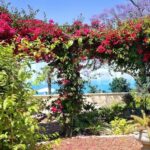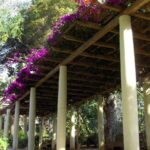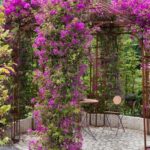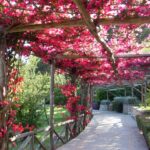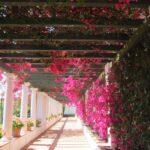The Bougainvillea: A Burst of Color and Resilience
Bougainvilleas, with their vivid, papery bracts, are a stunning addition to gardens worldwide, celebrated not only for their beauty but also for their hardy nature. These plants, native to South America, have found their way into the hearts and landscapes of gardeners across various climates. Let’s explore the fascinating world of bougainvilleas, from their history and characteristics to cultivation tips and uses.
Historical Roots
The bougainvillea was first discovered in the late 18th century by French botanist Philibert Commerçon during an expedition in Brazil. The plant was named in honor of his companion, the French explorer Louis Antoine de Bougainville. Over time, bougainvilleas have been hybridized and cultivated into numerous varieties, each showcasing a spectacular array of colors.
Botanical Characteristics
Bougainvilleas belong to the Nyctaginaceae family and are known for their thorny, woody vines. They can grow as shrubs, climbers, or even trees, depending on the variety and pruning method. The true flowers of bougainvilleas are small, white, and often overshadowed by the vibrant bracts, which are commonly mistaken for petals. These bracts come in a multitude of colors, including magenta, purple, red, orange, and white.
Cultivation and Care
Climate and Soil
Bougainvilleas thrive in warm, tropical, and subtropical climates. They require plenty of sunlight—at least six hours a day—to produce their best display of bracts. While they can adapt to various soil types, they prefer well-draining soil with a slightly acidic to neutral pH. Good drainage is crucial, as bougainvilleas do not tolerate waterlogged conditions.
Watering and Fertilization
These plants are drought-tolerant once established but benefit from regular watering during dry periods. However, overwatering can lead to root rot and other issues. A balanced, slow-release fertilizer applied during the growing season can enhance their growth and bract production.
Pruning and Training
Pruning is essential for maintaining the shape and size of bougainvilleas. Regular pruning encourages new growth and can promote a more prolific display of bracts. Bougainvilleas can be trained to grow on trellises, fences, or as standalone trees and shrubs. Their flexible nature allows gardeners to shape them according to their landscape needs.
Pests and Diseases
Bougainvilleas are relatively pest-resistant but can occasionally be affected by aphids, caterpillars, and spider mites. Common diseases include leaf spot and root rot, primarily caused by overwatering. Ensuring proper air circulation and avoiding waterlogged soil are effective preventive measures.
Uses and Aesthetic Appeal
Garden Design
Bougainvilleas are versatile in garden design. Their ability to climb makes them ideal for covering walls, pergolas, and trellises, creating a stunning cascade of color. As shrubs, they can serve as focal points in garden beds or as vibrant hedges.
Container Gardening
For those with limited garden space, bougainvilleas can be grown in containers. This approach not only controls their size but also allows for mobility, so the plants can be moved to the sunniest spots or sheltered during cold weather.
 Flower Love
Flower Love
